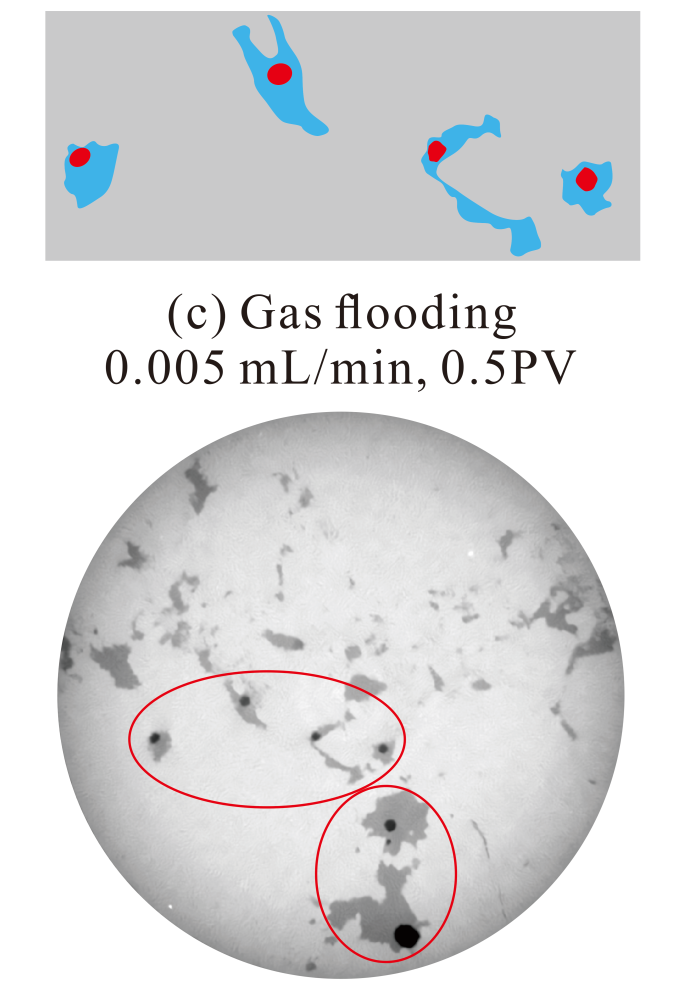
The characteristics of gas-water two-phase flow are the key to gas production and storage. We characterized gas-water two-phase flow in porous, fractured and vuggy carbonate rocks via gas and water flooding experiments with in-situ x-ray microtomography. The experiments were performed at room temperature, and detailed experimental procedures of gas flooding and water flooding are as follows: 1. Initially, N2 gas was injected at 0.005 mL/min (the corresponding capillary number was calculated to be 1 × 10-9) until water production stopped, and the sample was CT imaged several times during flooding. The gas flow rate was then doubled, while CT images were acquired for this higher flow rate. 2. Subsequently water was injected at 0.01 mL/min (the corresponding capillary number was calculated to be 1 × 10-7). The first CT scan was carried out when water breakthrough occurred at the outlet of the core holder. To displace more residual gas, we increased the pore pressure, and imaged the sample under various pore pressures (the maximum pore pressure is 5 MPa). The confining pressure was always 2 MPa higher than the pore pressure. Note that the sample-to-detector distance and source-to-sample distance were 23 mm and 35 mm, respectively. Image acquisition took approximately 4 hr (2,001 projections of the samples were acquired). The 2,001 radiographs were reconstructed to CT slices and further analyzed using Avizo software.
Yongfei YANG (China University of Petroleum (East China))
July 31, 2021
ODC-BY 1.0
10.17612/hsq8-fh48
The downloadable archive contains all project data; the size of the archive file for this project is 53.91 GB.
Download